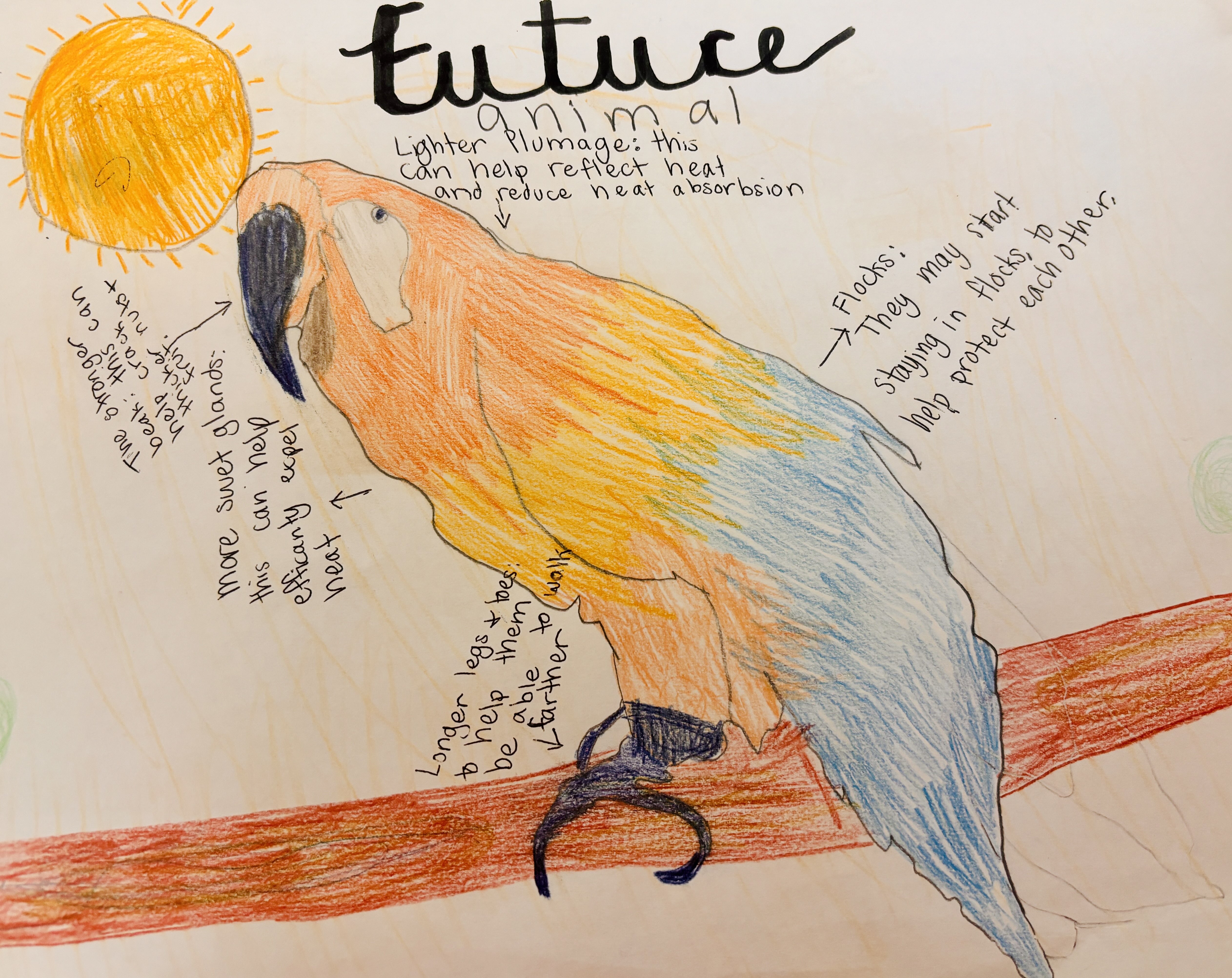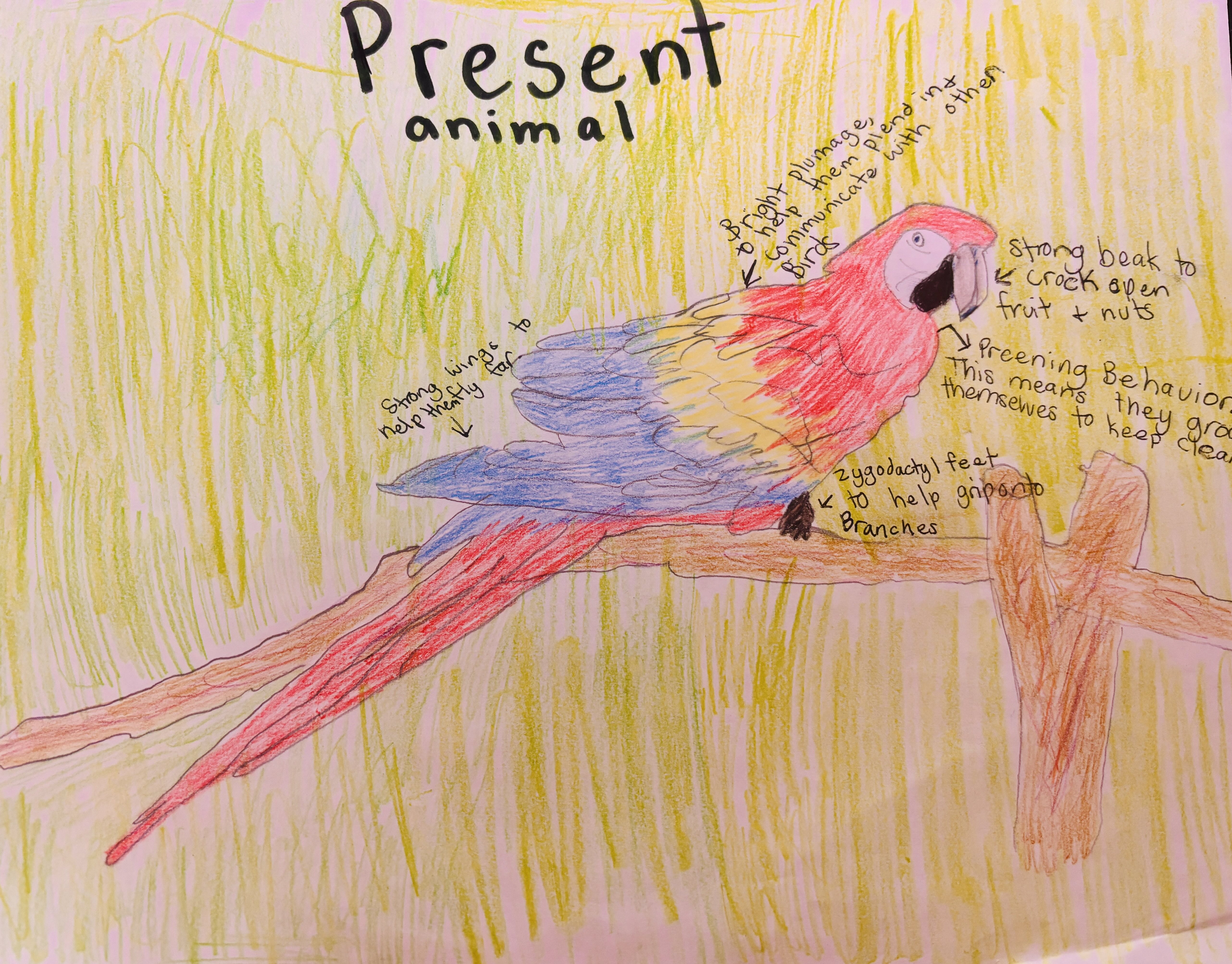The Scarlet Macaw, scientifically named Ara Macao, is a vibrant bird native to tropical rainforests. Its bright plumage aids in communication and camouflage, while its strong, curved beak helps crack tough seeds and fruits. With zygodactyl feet, they can grip tree branches easily. Macaws preen their feathers for cleanliness and waterproofing, and their strong flight abilities allow them to navigate dense forests. They live in social groups, using loud calls to communicate. Their diet includes seeds, fruits, nuts, and occasionally clay to neutralize toxins.
In a dry savanna, macaws would adapt to harsher conditions. Structural adaptations might include lighter plumage, longer legs for foraging on the ground, and more robust beaks for tougher food. Behavioral adaptations could involve nocturnal activity to conserve water and increased flock cooperation. Physiologically, macaws may evolve better thermoregulation and water retention. These adaptations would help them survive a changing, hotter environment shaped by global warming.
Contact us
Thank you for your interest in contacting Future Engineers. We look forward to connecting with you!
General Inquiries
support@futureengineers.orgSponsorship Inquiries
sponsor@futureengineers.org

